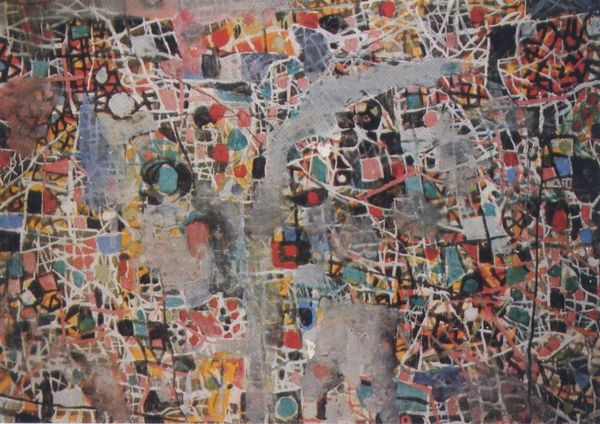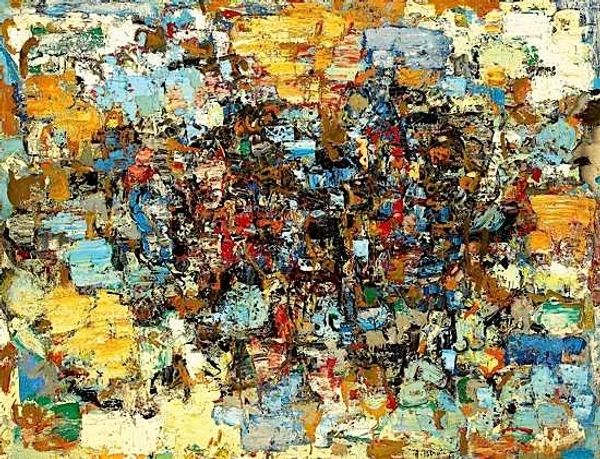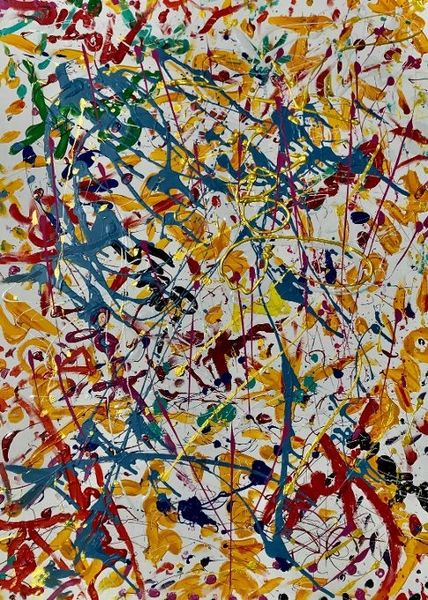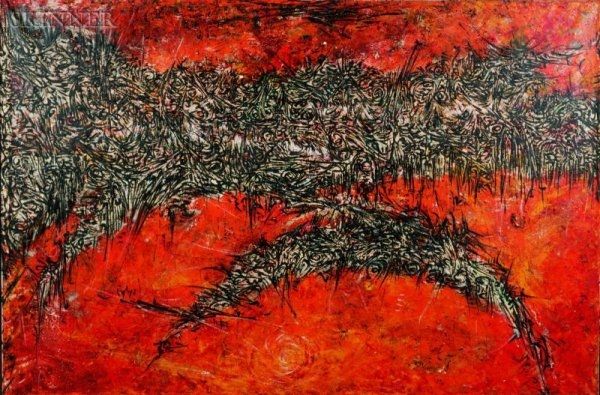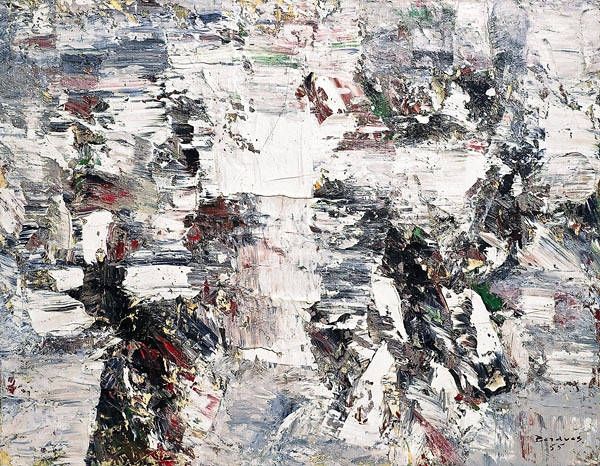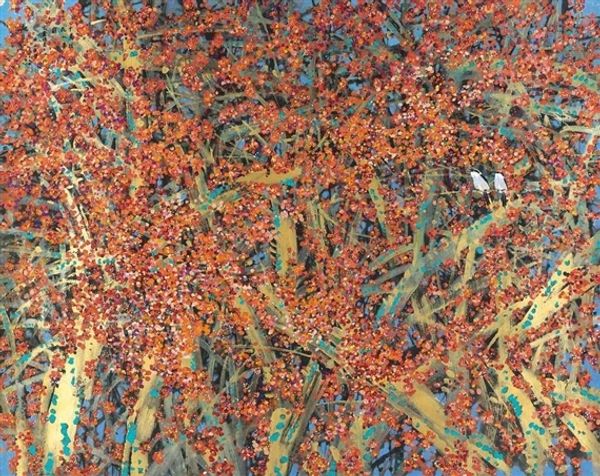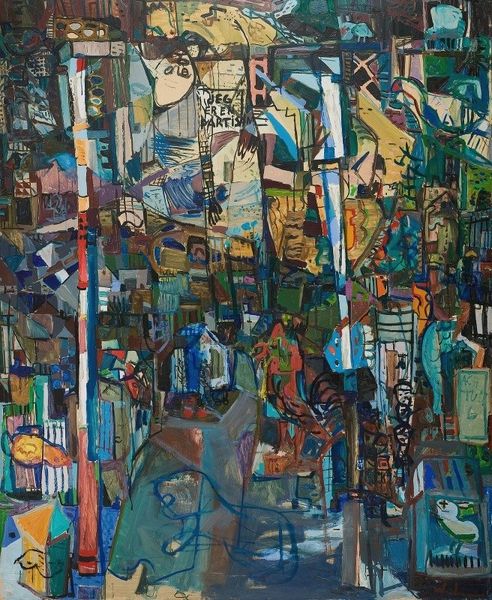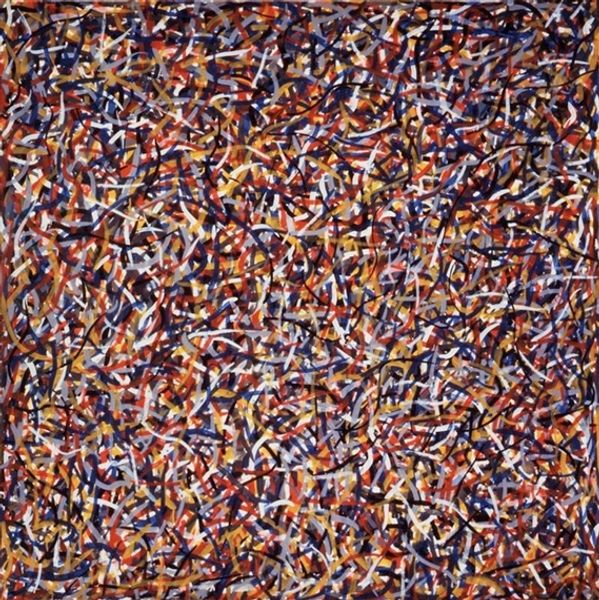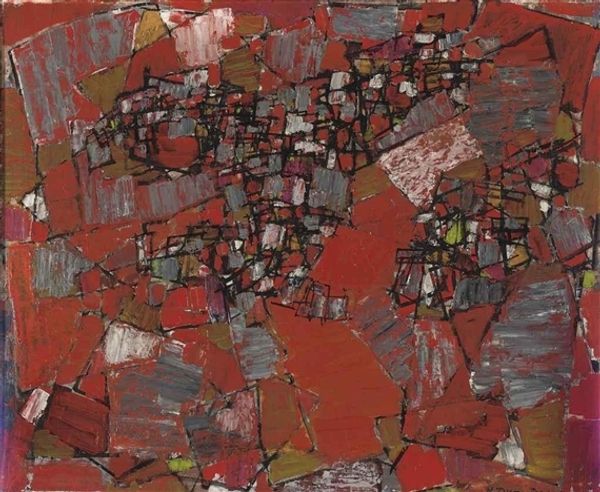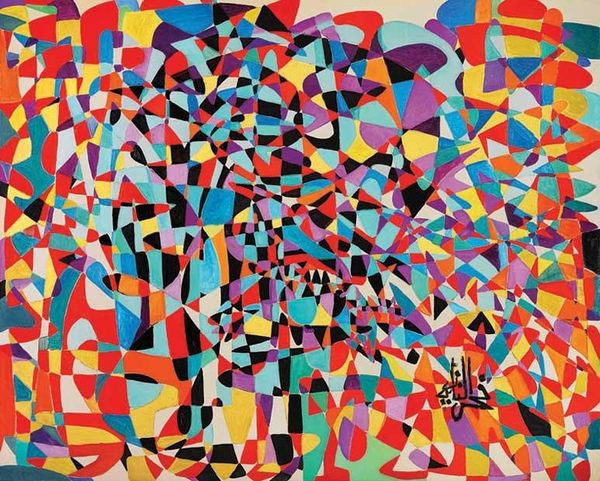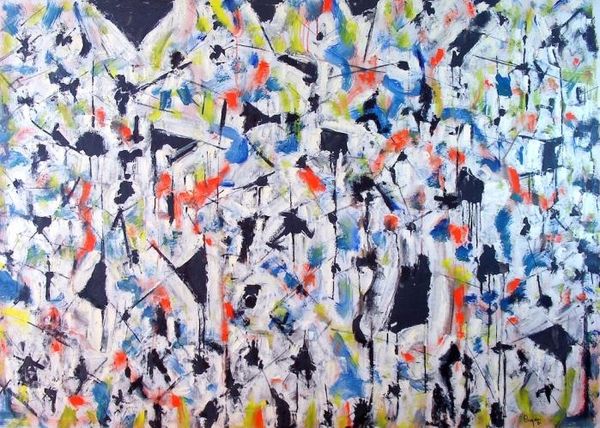
acrylic-paint
#
abstract-expressionism
#
abstract expressionism
#
non-objective-art
#
colour-field-painting
#
acrylic-paint
#
abstraction
#
abstract art
#
modernism
Copyright: Natalia Dumitresco,Fair Use
Editor: This is Natalia Dumitresco’s "Composition" from 1957, done in acrylic paint. It has an interesting scattered, almost frantic energy. What do you see in this piece, from a broader perspective? Curator: I see this painting as a product of its time, a fascinating artifact of post-war anxieties filtered through the lens of Abstract Expressionism. How does this chaotic energy play into the larger narrative of Europe navigating rebuilding and redefining itself? Editor: That’s an interesting point. I was mainly responding to the colours and shapes but I see how you're situating it historically. Do you think its abstraction removes it from reflecting those anxieties directly, or does it act as a kind of emotional translation? Curator: I think abstraction allowed artists to explore feelings and psychological states without resorting to overt representation. Dumitresco, a woman artist working in a male-dominated field, might have used abstraction as a space to negotiate her own experiences and perspective. Do you see any echoes of this gendered aspect when you consider the gestures or composition? Editor: I hadn't really considered it, but now that you mention it, there's a certain delicate intricacy within all the apparent chaos, maybe even a resilience in the face of the pressures of the era and art world! Curator: Exactly! Considering this painting, its non-objective presentation, and its history may suggest ways that Dumitresco constructed her own visual language and staked claim in a historical period defined by major political shifts. Editor: This has totally transformed how I look at the painting. It’s much more than just a composition of colors and shapes. Curator: Indeed. Hopefully, this dialogue can open up new paths and ways of observing how art reflects the society surrounding its creation!
Comments
No comments
Be the first to comment and join the conversation on the ultimate creative platform.
